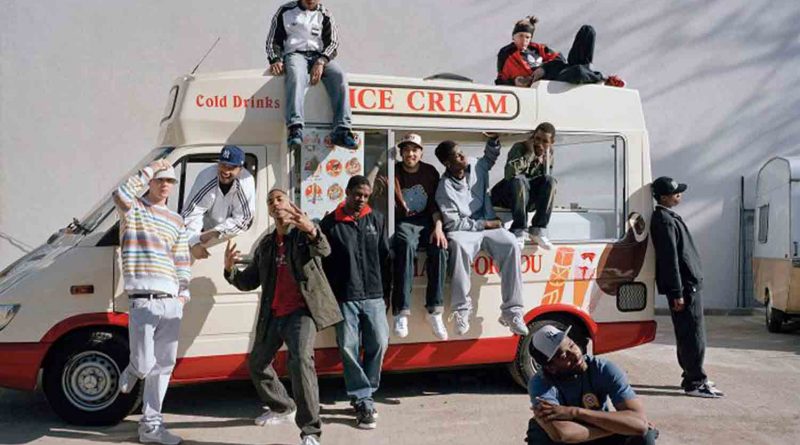Famous grime figures and their roots in Roman Road, Bow E3 (#BowE3)
Defining urban Britain in the noughties, grime music was honed and crafted by the likes of Wiley and Dizzee Rascal in the tower blocks of Bow and on the street corners of Roman Road.
Grime music, the genre which took the British charts by storm is deeply connected to Roman Road and the surrounding area. The sound which arguably defined urban Britain in the noughties was honed and crafted by the likes of Wiley and Dizzee Rascal on the street corners and in the tower blocks of Bow and the Roman.
Roman Road’s Rhythm Division, the now infamous record shop run by Risky Roadz, was a hub of activity for the artists and was the scene of countless freestyle battles and mic-offs. Our guide lists some of the famous grime figures who have graced Bow’s Roman Road, but there are many more.
Wiley

Pioneer of ‘Eskibeat’ (the jagged, electronic backing that characterises the genre), Wiley shot to prominence in 2001 with the single Champagne Dance, as part of the Pay As U Go crew. Now regarded as the ‘Godfather of Grime’, he spent a lot of time during his youth and early days as an artist in the Roman’s bustling marketplace. Wiley refers to the street as the ‘nurturer’ of grime, because of the amount of young grime artists who would hang out there and take part in the infamous freestyle matches. His first music video, Wot Do U Call It? was shot on the Mile End park side of the Roman.
Dizzee Rascal

When a fresh-faced 18-year-old Dizzee Rascal released his debut album Boy in Da Corner in 2001, he became a global star. Fast forward two decades and the rapper is showing that he hasn’t forgotten where he came from with E3 AF, released in October 2020. The album refers to his heritage and his beginnings in the Roman and the surrounding neighbourhoods. Like many other members of the scene, Rascal often frequented Rhythm Division, the legendary record shop that has now become Zealand cafe, to sell his music and perform.
Mercston

Mercston was part of several notorious crews like Wolfpack and The Movement. The rapper, who released his long-awaited debut album Top Tier this year, grew up on the Roman and lived there until he was 25. He recalls the fabled Rhythm Division store and the freestyle battles that would take place outside: ‘It was the hub. Every single artist who would have put their music out in the early days would have gone through Rhythm Division. Iconic spot.’ The Roman is also a special place for Mercston as he shot his first music video, Summertime, outside what was All Star Barbers, 607 Roman Road.
Skepta
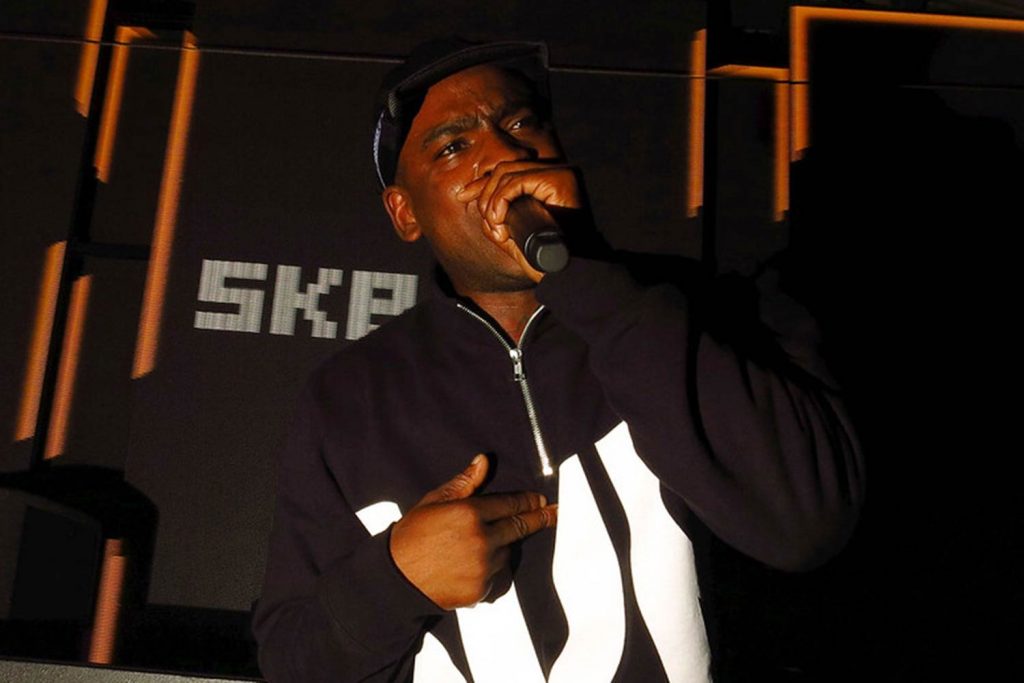
Skepta is one of grime’s biggest exports and has had a huge impact on British culture and music since his breakout debut album Greatest Hits was released in 2007. He has also broached the acting world too, making his screen debut in Anti-Social in 2015. The following year his album Konnichiwa won the Mercury Prize and cemented Skepta as one of the globe’s biggest artists. Off that acclaimed album was the huge single That’s Not Me, which was filmed along the Roman. The music video has been viewed over 21 million times.
Tinchy Stryder
Tinchy Stryder burst onto East London’s grime scene when he was 14 years old, appearing on pirate radio alongside Dizzee Rascal and Wiley. Growing up in Bow, the trio knew each other before they shot to global fame, forming Roll Deep crew in 2002. The first part of Tinchy’s pseudonym comes from his school days in Newham, where he was called Tinchy for being small for his age. By 2009 Tinchy was the UK’s biggest-selling male artist with his album Catch 22 spawning two Number 1 hits – Number 1 and Never Leave You.
Lady Shocker
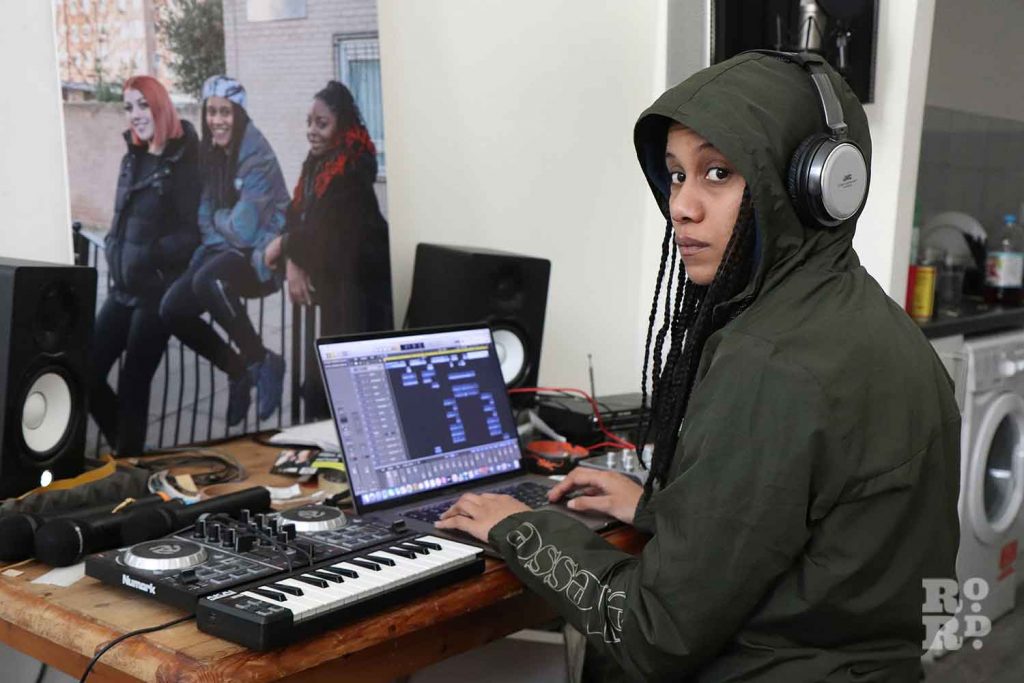
The ‘first lady’ of the Wolf Pack crew, a formidable clash opponent, and with a long-living solo career, Lady Shocker has been a mainstay of the Bow grime scene since its earliest days, and one of its few female artists. ‘I was born and raised in it,’ she says. ‘I know nearly every MC in the game and that’s because I went to every youth centre, every club.’ Shocker grew up around the Roman and Kano’s DJ, Bionics, lived a couple of doors down from her when she was growing up. She still clashes to this day.
DJ Target
DJ Target grew up on Devons Road, just a five-minute walk from Bow’s iconic three flats where some of Rinse FM’s most well-known grime sets were first broadcast. An original member of Roll Deep grime crew, it was in DJ Targe’s bedroom that Wiley and Dizzee Rascal first met each other, an encounter that Target recalls in his non-fiction book, Grime Kids. An insider’s account of the rise of grime in Bow, the book inspired a new BBC 3 series of the same title coming out in November 2023. Target has experienced both underground and mainstream success and now hosts regular shows on BBC Radio 1 and 1Xtra.
Risky Roadz
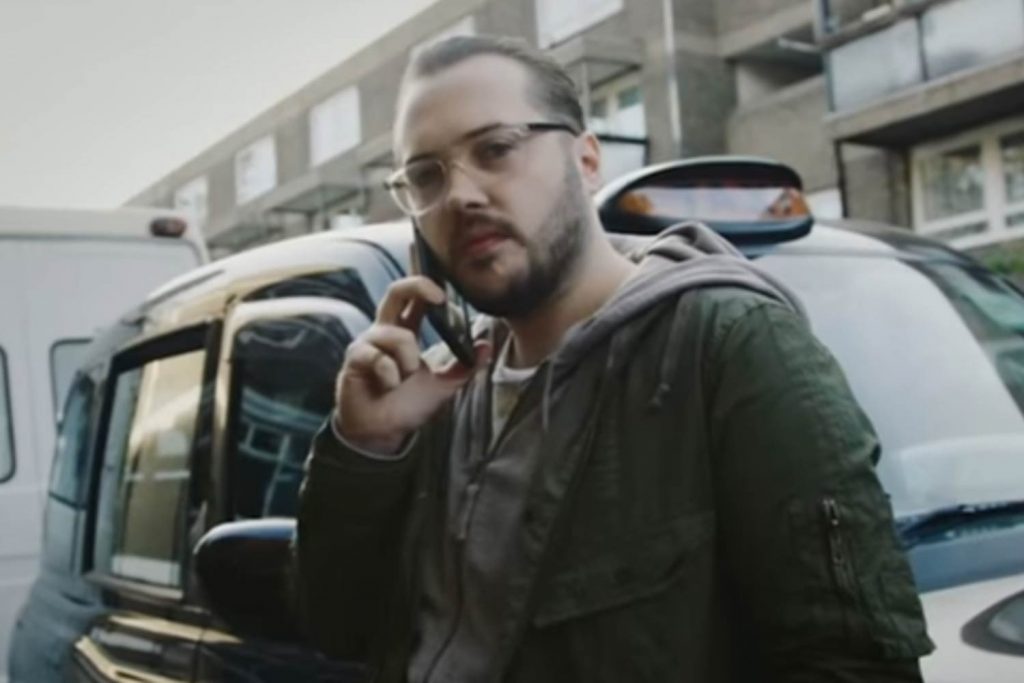
A man who would rather play a supporting role than occupy the spotlight, Rooney ‘Risky Roadz’ Keefe, was instrumental in bringing grime music to the ears of the wider public. As the owner of Rhythm Division, he is regarded as ‘the guvnor’ by many artists, who were able to pass through his record store and sell early cassettes and LP’s. His role as DJ on Rinse FM also secured airwave play for unknown artists like Wiley, Tinchy Stryder and JME.
Flowdan
Growing up in the shadow of Bow’s three flats, Flowdan was a major grime figure from the start and coined the crew name, Roll Deep, a homage to the popular bashment phrase, ‘rolling deep’. Close friends with Wiley, the crew’s de facto leader, Flowdan has cemented his raw MC style on some of the biggest tracks of the past decade – Skeng, Jah Wah, Say Nothin – and put out on labels including Eskibeats and Hyperdub. He was also featured in the 2020 BBC Documentary, ‘The Story of Grime’.
Simon Wheatley
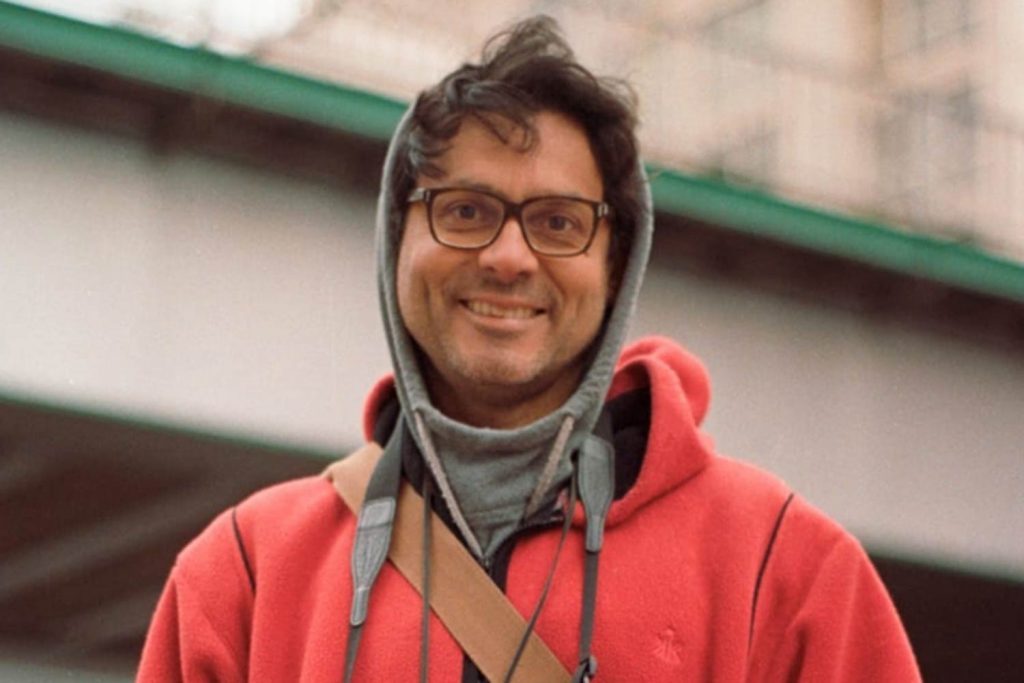
Photographer Simon Wheatley played a key part in the scene, as his work documents some important snap-shots of urban life around the Roman. Grime is an incredibly visual musical genre, in that the artists wanted to get the grittiness and realism of their songs conveyed. Wheatley’s expert shots of the artists in their early days capture that tense, but familial atmosphere – as well as the precociousness of youth. Some of his work has been displayed at Cafe East, under the title Don’t Call Me Urban.
Grime Gran
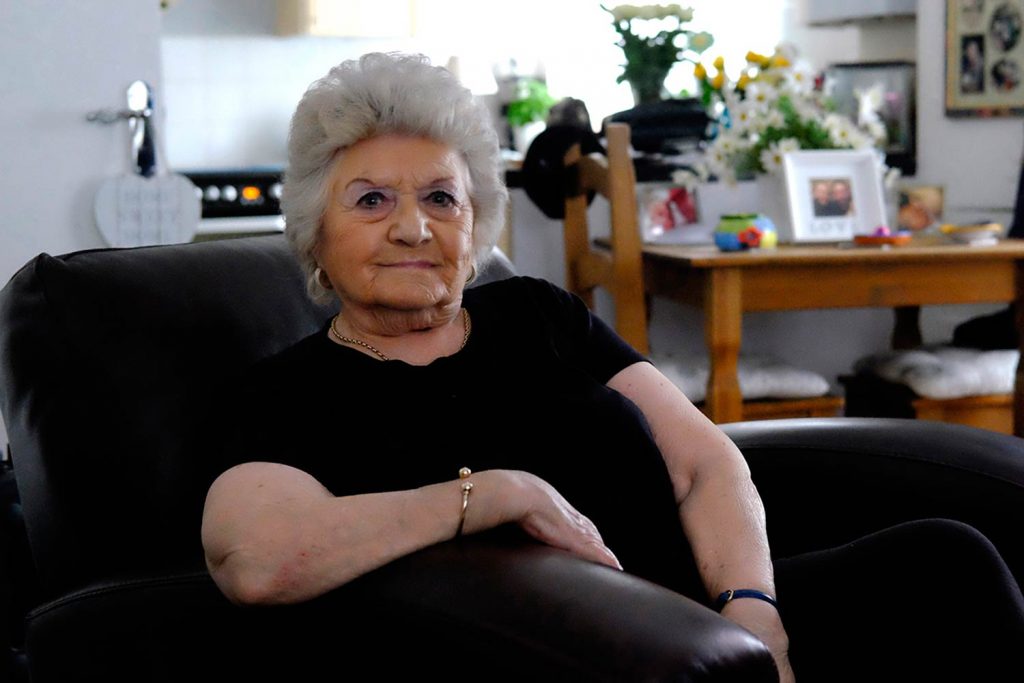
If your grandson invited a crew of grime artists over for tea, how would you respond? Have a nice chat over a cuppa? That’s precisely what Grime Gran did, a moniker she earned through conversations with stars such as Giggs, Lethal Bizzle and Skepta, filmed and put online by her grandson, Risky Roadz. The YouTube videos were an instant hit with grime fans, making her the undisputed “Nan of Grime” in the process.
DJ Slimzee
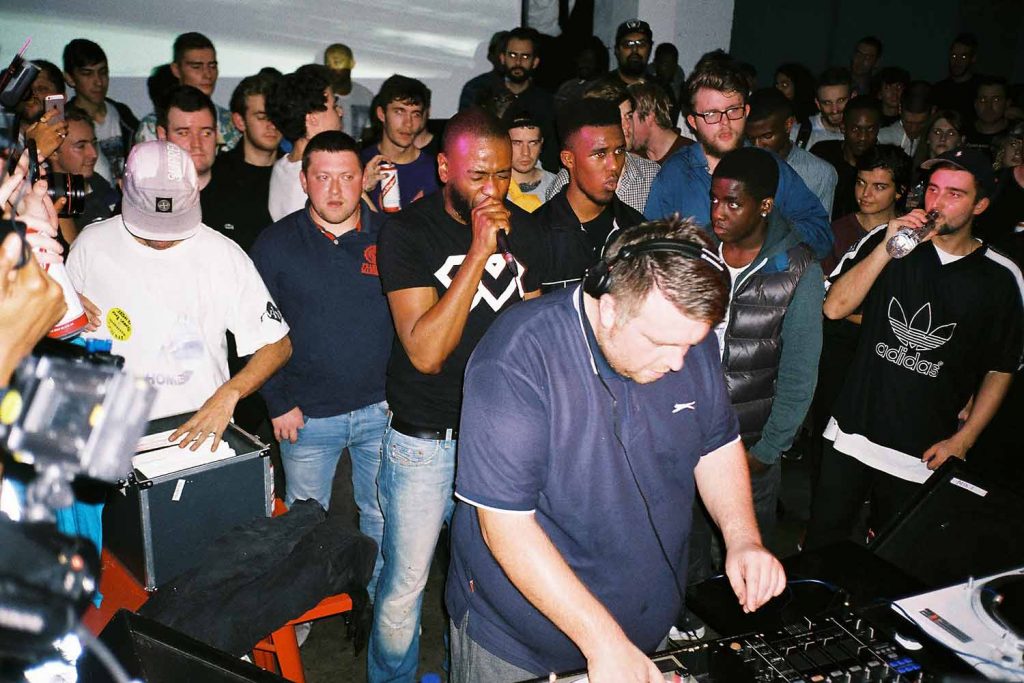
DJ Slimzee is well-known in the grime scene as a co-founder of East London underground radio station, Rinse FM. When first founded, Rise FM was hosted as a pirate station in Slimzee’s house. In 2005, the Council banned Slimzee from being on the roof of any building in Tower Hamlets more than four storeys high in an attempt to stop him broadcasting. Nowadays, the radio station is more legitimate and still dominates London’s airwaves. Slimzee has DJ’d multiple Boiler Room sets and is a household name within the grime scene. He still lives in Bow today.
Roll Deep
Roll Deep’s name was coined by Bow grime MC Flowdan in 2001, but the collective first came together in the mid-1990s and is widely considered one of the forerunners of grime. The crew rose to prominence after the disbandment of UK garage crew, Pay As U Go Cartel, which has been credited for paving the way for grime music. Early members of Roll Deep included Wiley, DJ Target, Flowdan and Dizzee Rascal, and many of grime’s biggest names were once part of the dozen-odd collective of MCs and DJs. The group has two UK No.1 singles, Good Times and Green Light and released five studio albums between 2001 and 2012 before entering an indefinite hiatus in 2013.
Ruff Sqwad
Ruff Sqwad emerged in 2001 from the estates of Bow, a loose collective of DJs and MCs including Tinchy Stryder, MC Slix and Rapid. The grime innovators never signed a record deal and pocketed 100% of the profits from 20 self-released singles between 2003 and 2006. Ruff Sqwad’s independence from major record labels meant that while their music was huge on pirate radio, they were little known in the mainstream. In 2004, Ruff Sqwad released Functions on the Low, one of the most popular grime instrumentals that Stormzy later used on his 2015 hit, Shut Up. Today, Ruff Sqwad records change hands for triple figures online and you might spot them in Zee&Co.
If you like this article, you might also like to read the history of Roman Road.

